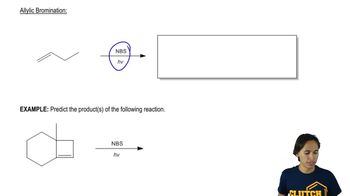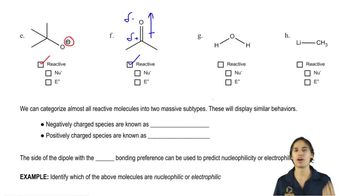Textbook Question
Would you expect chlorination to occur ortho, para, or meta to the pyridinium ion in the following molecule? Explain your answer.
 Verified step by step guidance
Verified step by step guidance Verified video answer for a similar problem:
Verified video answer for a similar problem:



 4:29m
4:29mMaster Activity and Directing Effects with a bite sized video explanation from Johnny
Start learning